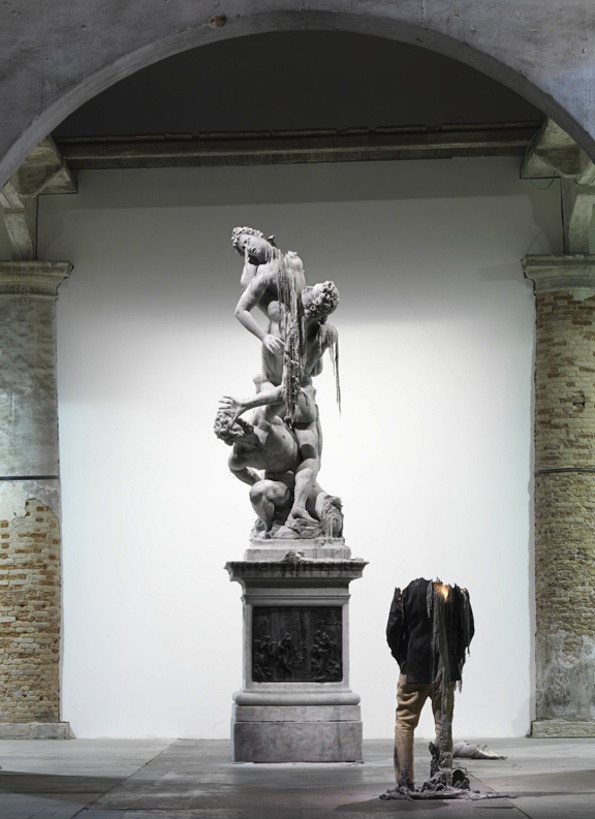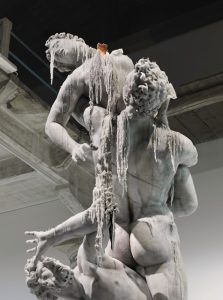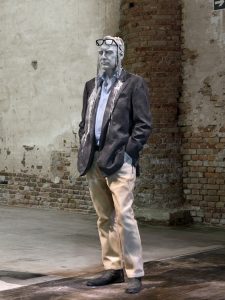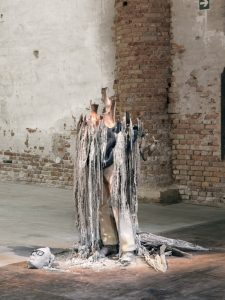
When reading the Fusion article by Ethan Chiel, a particular moment immediately reminded me of art I’d seen. The pieces I thought of were two sculptures by Urs Fischer, and they were displayed at the 2011 Venice Biennale. The most visually striking of these sculptures, to me, is his reconsideration of a classical sculpture, Rape of the Sabine Women, but his rendition of contemporary man is certainly more chilling conceptually.

Jonathan Jones, an art critic who saw the exhibition, wrote that “Fischer’s candle-man haunted me later when I was walking the decaying streets of Venice. It will haunt me for a long time. It is a beautiful, funny, frightening emblem of time’s fatal arrow.” Times fatal arrow, then (death) dramatically effects not only the emblem of classical and “eternal” sculpture, but those of us who observe and admire it. Even art cannot be so idealized as to stop death.
Chiel reports that the manager of a Twitter-bot account, which strikes me as something in between performance and technological experimentation, said: “Bots are ‘processes, not artifacts.'” He continues, “A bot’s survival beyond his lifetime or the lifetime of Twitter is ‘about longevity of the algorithm, more so than the actual piece of code running.'” The “code,” here, is Fischer’s wax, continuing to run down its own form until it disappears. Think of slowing this process to the point that even after the death of the artist the sculpture would still be changing and evolving as the artist intended. I think that here’s an interesting intersection, here, between art, technology, intentionality, time, and death.


